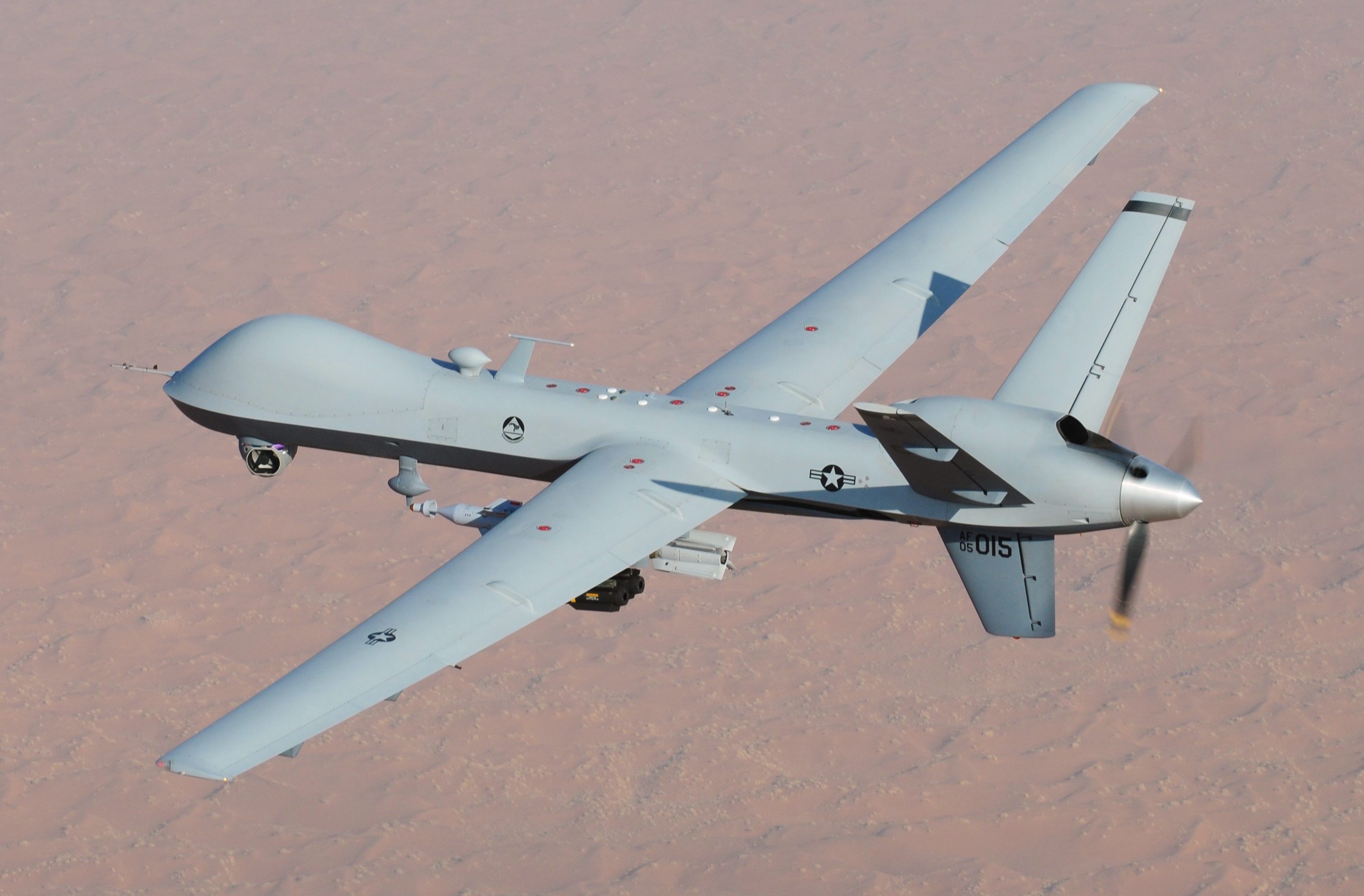Amid ongoing tensions between Iran and the US, Iran’s state broadcaster IRNA reported that American drones entered “two Iranian air defense identification zones and was forced to change course after its air defense systems issued decisive interception warnings”.
The incident also comes a few days after the two countries were locked in a tussle related to the seizure of an oil tank in the Gulf of Oman. Even though Iran didn’t divulge the exact date on which the drone incident occurred, it is likely to have taken place on November 8-9 when Iran was holding its annual war games, Zulfiqar 1400, in the Strait of Hormuz.
Both Iran and the United States are gearing up for nuclear talks that will be held a few weeks from now.
American Drones In Iran
The two unarmed UAVs that were sent back by Iran are the best that America has in its arsenal — MQ-9 Reaper and RQ-4 Global Hawk. These are also referred to as remotely piloted vehicles due to their control with human ground controllers.
Built by General Atomics Aeronautical Systems, the MQ-9 Reaper is used by the US Air Force. It has been developed with remote control functions as well as automatic flight capabilities. It is the first hunter-killer drone used by the US military. The drone is known for its long-endurance and high-altitude surveillance capabilities.

The MQ-9 Reaper variant has the capacity to carry 15 more times ordnance load as compared to previous American Predator drones that were primarily used for reconnaissance and intelligence gathering.
The MQ-9 Reaper is the same UAV that was used by the US to assassinate the Commander of Iran’s Quds Force, Qassem Soleimani and Abu Mahdi al-Muhandis, the deputy commander of the Iraqi Mobilisation forces in 2020.
On the other hand, the RQ-4 Global Hawk has been developed by Northrop Grumman for the US military. The Global Hawk boasts a very high-resolution radar with Infrared sensors with very long loiter times. This allows it to survey very large swathes of areas in one phase of flight.
The superior surveillance capabilities, long-endurance, and high altitude flying make it ideal for intelligence gathering and surveillance operations. It can help and guide other aircraft to hit the target with precision and allows for better protection of friendly forces.
The US Navy also uses a naval surveillance platform built on the lines of the Global Hawk. In 2019, an Iranian surface-to-air missile shot down a US Navy Global Hawk over the Strait of Hormuz, inviting fresh sanctions from America besides escalating tensions between the two countries.
How Capable Is Iranian Air Defence?
The Republic of Iran has a separate Air Defense Force, which was earlier part of the Iranian Army. Its air defense inventory has radar systems, artillery, missiles, and man-portable AD systems. Iran also has its indigenously developed Khordads and the Russian S-300 SAM.
It also has a variety of radars built locally, some passive (Alim, Aser); some for electronic warfare utilities (Ghamar) and others imported from Russia and refurbished domestically (Falaq).
According to the Iranian media, the two American drones approached the site of Zulfiqar wargames, the strategic Strait of Hormuz – a choke point that connects the Persian Gulf with the Gulf of Oman. About 20% of the world’s trade by volume passes through this strait located in the Indian Ocean. Any attack or blockade of this strait can trigger a global crisis.
The Iranian war games started on November 7 with the theme “Responding to Aggression”, a veiled reference to the United States.
The Iran Nuclear Deal
The relationship between Iran and the US has been rocky since then American President Donald Trump decided to unilaterally exit the nuclear deal, also called the Joint Comprehensive Plan of Action (JCPOA), in 2018. Their bilateral relations hit rock bottom the Washington imposing sanctions and Tehran threatening uranium enrichment above permitted levels.
The two countries have also engaged in proxy wars using drones and missiles. However, the current incident has occurred ahead of talks regarding the nuclear deal and the lifting of sanctions.
America’s road for the return to #JCPOA pic.twitter.com/4CKOEfISyW
— Foreign Ministry, Islamic Republic of Iran 🇮🇷 (@IRIMFA_EN) November 9, 2021
Iran’s Revolutionary Guard troops on October 24 seized a Vietnamese oil tanker, MV Sothys. It is suspected that the vessel was trying to transfer sanctioned Iranian crude oil to Asia, according to Associated Press. The US military which witnessed the incident didn’t intervene as the tanker sailed into Iranian waters.
The rocky relationship between Iran and the US has created global faultlines, opened new flashpoints and changed strategic alliances. It remains to be seen if the two sides will be able to arrive at a deal acceptable to both Washington and Tehran or these proxy wars will continue.
- Contact the author at sakshi.tiwari9555@gmail.com
- Follow EurAsian Times on Google News